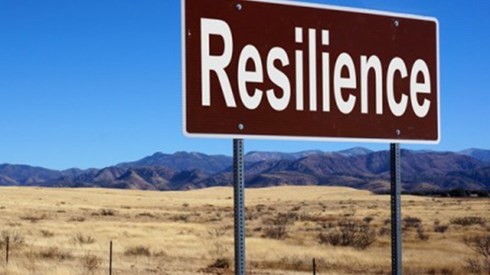Analysis Finds 10 Claims Sources Responsible for 75 Percent of Losses

July 25, 2022

Approximately 75 percent of financial losses arise from the top 10 causes of loss, according to a recent analysis of global insurance claims.
According to the Global Claims Review 2022 from Allianz Global Corporate & Specialty (AGCS), of those top 10 causes, the top 3 are responsible for 45 percent of the value.
"Despite improvements in risk management and fire prevention over the years, fire/explosion (excluding wildfires) is the largest single identified cause of corporate insurance losses, accounting for 21 percent of the value of all claims," the July 2022 report says.
Over the past 5 years, such incidents have been responsible for 18 billion euros-worth of insurance losses from more than 12,000 claims, AGCS says. Fires and explosions also were responsible for 13 of the 20 largest non-natural catastrophe losses examined in the AGCS analysis. And the average claim from such incidents was almost 1.5 million euros, AGCS reports.
"Claims are becoming more severe due to factors such as higher property and asset values, more complex supply chains, and the growth in concentrations of exposures," the AGCS report says. "Costs associated with the impact of business interruption following the aftermath of a fire can significantly add to the final loss total of an incident, given the time it can take to get production back up and running at a large manufacturing plant, while soaring inflation will only challenge claims costs further."
Natural catastrophes were the second leading source of claims, responsible for 15 percent of losses, AGCS says. "Losses continue to rise with climate change and changes to exposures (such as increasing economic activity in natural catastrophe zones)," the report says.
AGCS says its analysis of more than 20,000 claims worldwide—with an approximate value of 13.7 billion euros—showed that hurricanes and tornadoes were the most expensive cause of natural catastrophe losses, responsible for 29 percent of the value of all claims. Much of that total was driven by the 2017 and 2021 Atlantic hurricane seasons, with each ranking among the top three most active and costliest seasons on record, AGCS says. Along with storms, floods, frost/ice/snow, and earthquake/tsunami, the group was responsible for 77 percent of all natural catastrophe claims.
"Insurers are also seeing new and more unusual loss scenarios," the AGCS report says. "During 2021, the 'Texas Big Freeze' in the United States and flooding in Germany stand out as events that were both large but had unexpected claims."
Faulty workmanship/maintenance incidents were the third greatest source of losses, responsible for 9 percent of the value of claims, AGCS says. Such incidents were also responsible for 7 percent of the total number of claims.
Aviation collisions or crashes were the fourth top cause of losses worldwide, responsible for 9 percent of value. "There are many losses which fall within this category in addition to a major airplane crash however," AGCS notes. "These include damage to aircraft caused during ground handling incidents; over- and under-shooting runways; making an emergency or forced landing; or even damage caused by a bird strike."
Machinery breakdowns, including engine failures, were the fifth leading cause of loss, responsible for 5 percent of losses, AGCS found.
AGCS reports the remaining sources of claims in the top 10 causes of loss include, in order, defective products, 5 percent; shipping incidents, 3 percent; damaged goods, 3 percent; negligence or misadvice (professional indemnity claims), 2 percent; and water damage, 2 percent.
"Losses involving damaged goods, which can result from a number of different causes including storage, handling, loading/unloading issues, or when in transit, are the most frequent drivers of claims for insurers, accounting for 11 percent of all claims by number around the world," the AGCS report says. "However, such claims only equate to 3 percent by value."
The AGCS report notes that the scale of claims payments can vary enormously, reflecting the breadth of the risk landscape. Corporate insurance claims greater than 100 million euros such as those resulting from fires, aviation crashes, or shipping incidents account for fewer than 1 percent of claims by number, but about one-quarter (24.6 billion euros) of the total value of claims examined in the study, AGCS says. At the same time, about 88 percent of claims are valued at or below 50,000 euros, AGCS says, accounting for just 3 percent of the total value of all claims.
The AGCS report cites several issues to watch that could have an impact on claims going forward. Among them is inflation, the consequences of which will be felt across most insurance lines, the report says. "Ultimately, inflation brings pressure on claims severity from multiple angles," AGCS says, such as the impact of higher material and labor costs on property and construction claims, the impact of supply chain disruptions on aviation claims, and the effects of higher defense costs and settlement values on various liability lines.
While cyber-insurance claims have increased significantly in recent years, AGCS says claims frequency has begun to stabilize, though it remains at elevated levels.
A growing focus on environmental, social, and governance (ESG) and sustainability issues is another potential area that can affect future claims, the AGCS report says.
"Climate change is already a top boardroom issue, as companies face an array of physical and liability-related risks from a more extreme climate and from the transition to a low- or no-carbon economy," the report says. "However, social issues are also a growing area of exposure, from diversity and inclusion through to an organization's impact on local communities and supply chains."
Climate change-related litigation is likely to become a significant liability exposure for both companies and their directors in the years ahead, AGCS reports.
"The D&O insurance market has already seen claims related to climate change, such as in the aftermath of the California wildfires in 2018, and companies increasingly face the prospect of litigation from activist shareholders seeking to influence company policy or compensation for alleged damage related to past pollution," the report says. "Almost 2,000 climate change-related lawsuits have been launched to date—half of them in the past 7 years."
July 25, 2022





